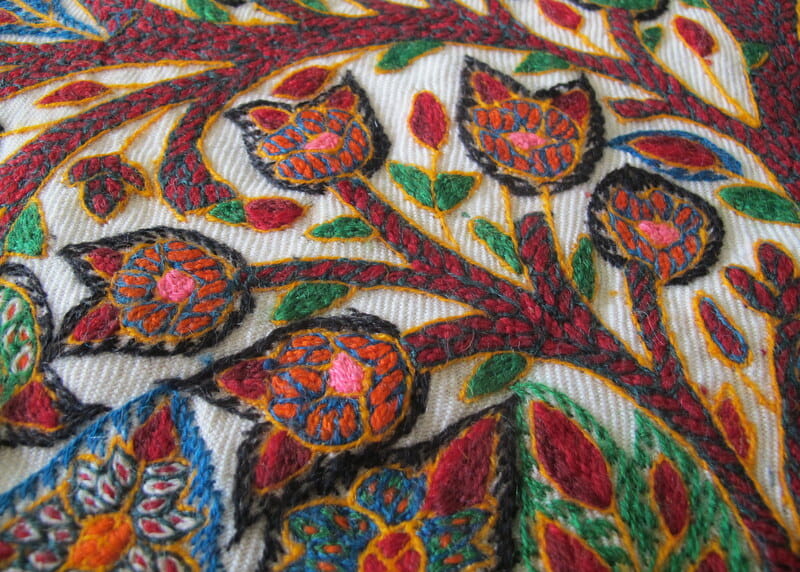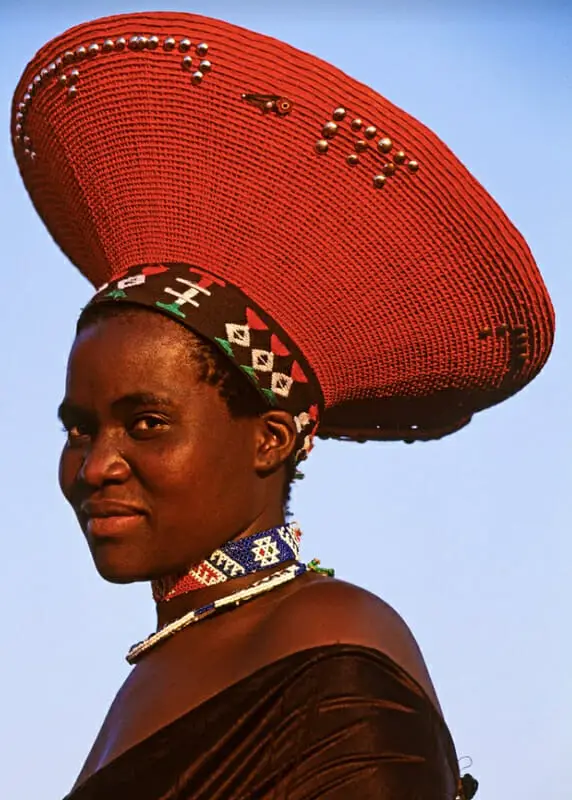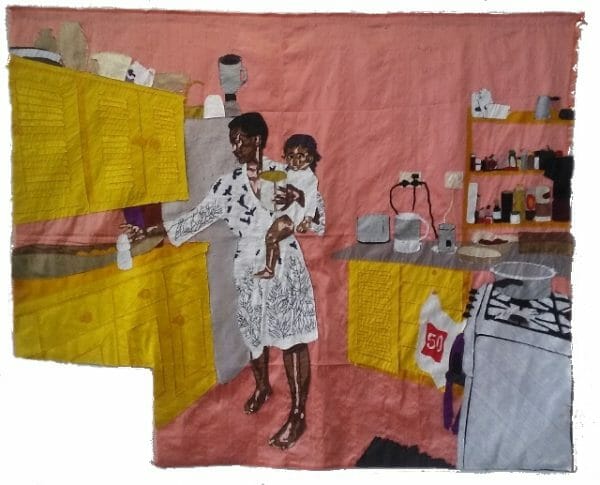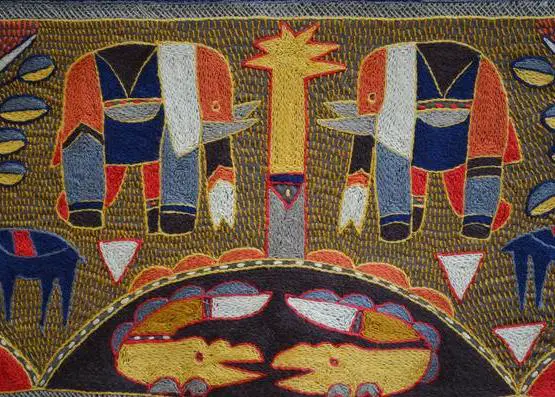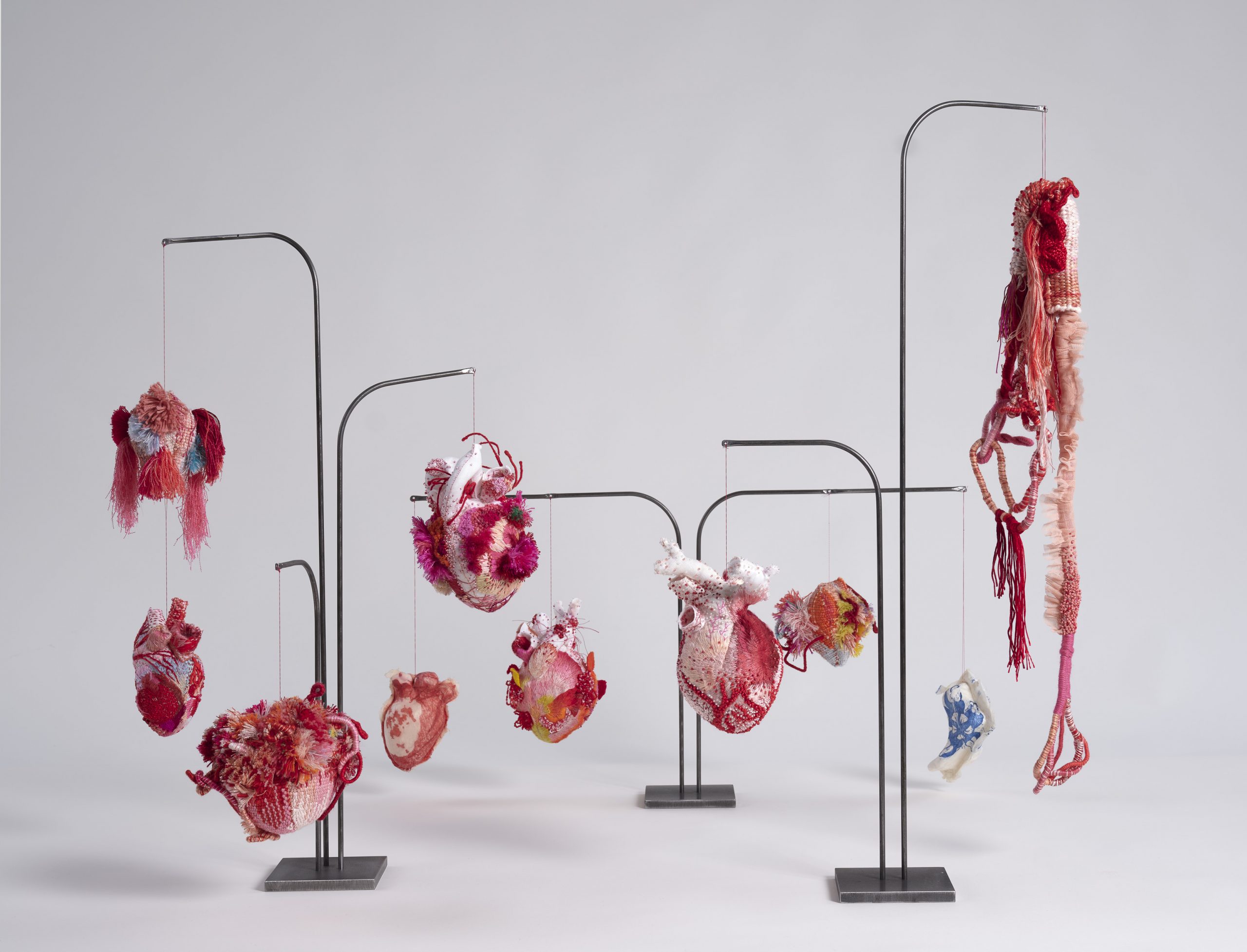Patteh, a traditional form of needlework originating from the Kerman province of Iran, consists of hand dyed woollen shawls covered with intricately embroidered traditional designs worked with wool threads.
Let’s look into these big beautiful textiles in a bit more depth!
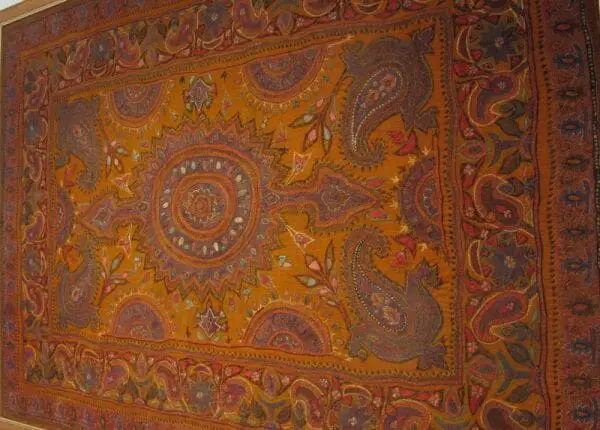
Shawls are made up of two parts, the base fabric or ariz, and the heavily embroidered patterns known as patteh. Ariz is woven from hand-dyed spring wool and dyed with natural ingredients like pomegranate skins, madder, henna, and walnut husks which create deep red or burnt orange fabric. The wool threads are dyed in the same way but also include indigo colours like blue, green, purple and black.
A typical design is made up of a paisley or boteh (meaning shrub, bush, or bent tree) in each corner, a toranj or flower motif in the centre, and an arch or mihrab on each side. This is enclosed in a decorative border consisting of flowers, leaves and birds. Each artist, from grandmothers to young girls, use these borders to show off their own creativity and flair.
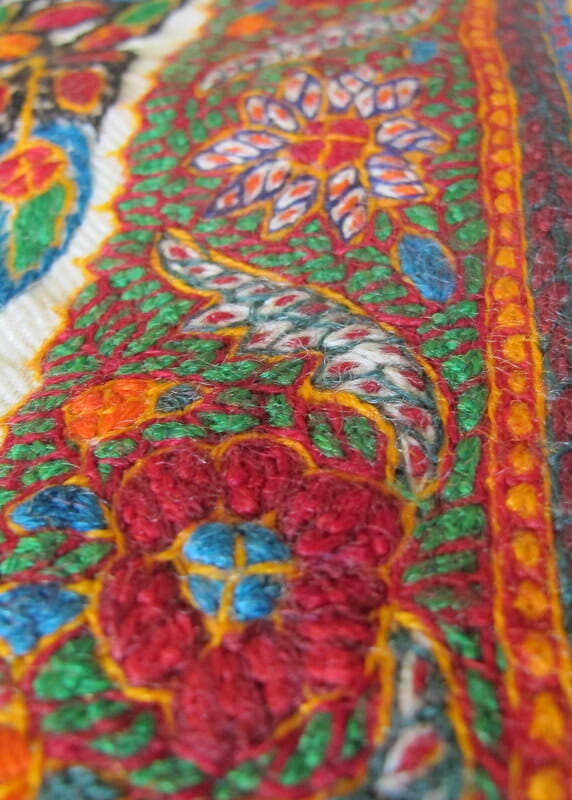
The embroidered stitches, dense and close together, completely fill the surface of the ariz, creating an extra layer of wool embellishment on top of the base layer. This time consuming and fibre-rich embellishing is what gives these patteh shawls their value and desirability. The stitches with unfamiliar names like rice stitch, kerman stitch, and boteh stitch, are not too different from traditional western embroidery stitches.
Although the boteh or paisley symbol is very familiar in the western world, it originates from Persia and has a fascinating history.
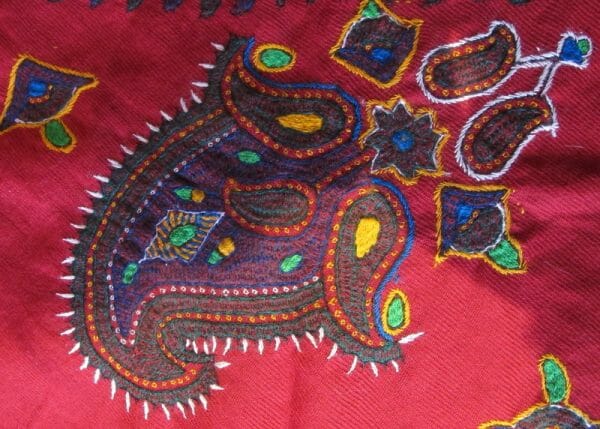
The cypress tree, a Zoroastrian symbol of life, depicts eternity, strength, integrity and freedom. After the Islamic conquest of Persia in the 7th century, Zoroastrian people migrated to India and Kashmir where they continued to depict their beloved cypress tree, but now with a bent over top. This symbol became known as a boteh. It symbolised their duress but also their strength and resilience. They will bend but they will not break.
The boteh design was incorporated into the Indian lexicon and became a popular design for woven shawls, also known as Kashmir shawls. The Dutch East India Company imported these shawls to Europe during the early 1800’s, where the boteh design became extremely popular and Kashmir weavers began adapting their designs to suit specific markets in Europe and the Balkan states.
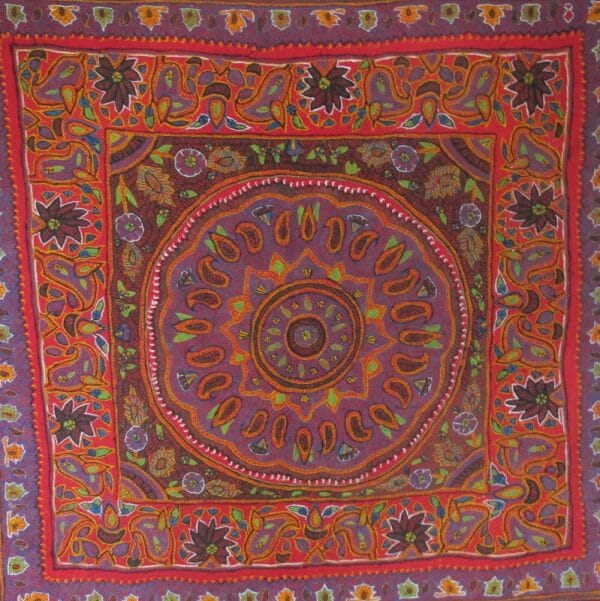
European demand became so great that the producers in India and Kashmir could not keep up. Textile mills in France, Holland and Britain began producing their own shawls. The textile mill in Paisley, Scotland became one of the major producers of these shawls and the British began referring to these distinct boteh designs as paisley. In France, it was referred to as palme, in the Netherlands as bota, in India as bootar, and in Japan as peizuli.

